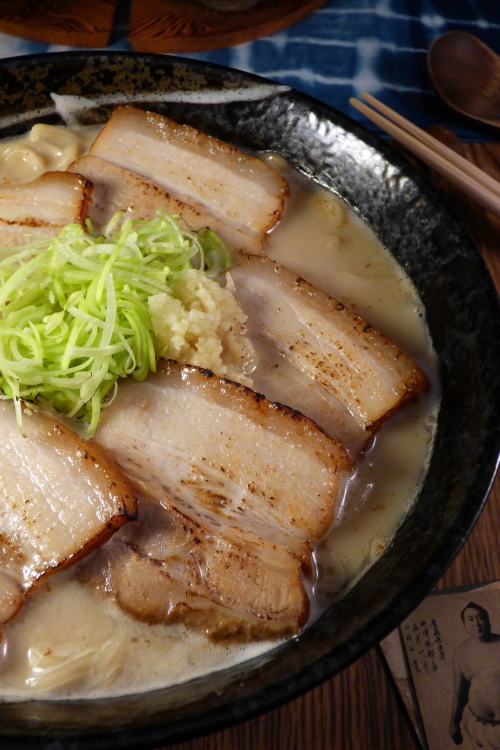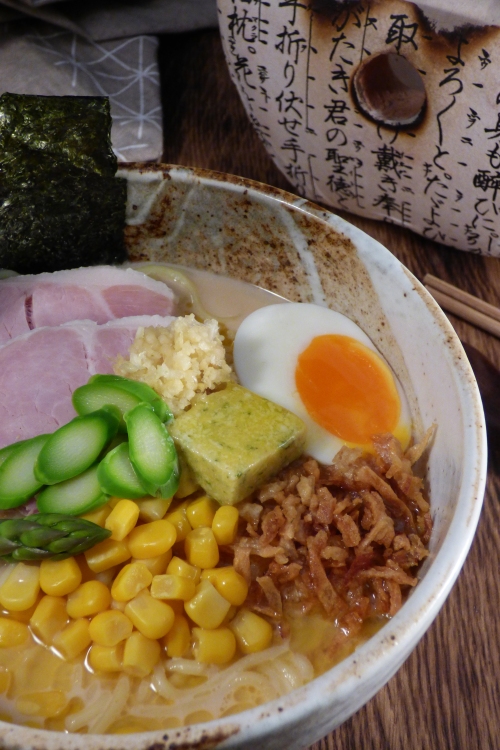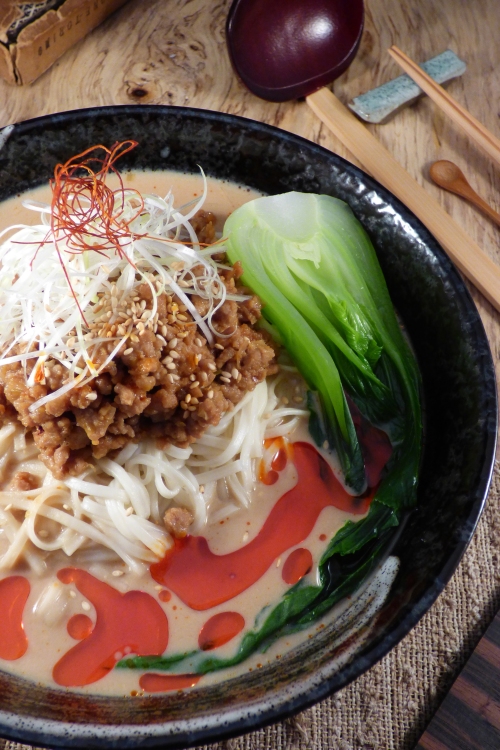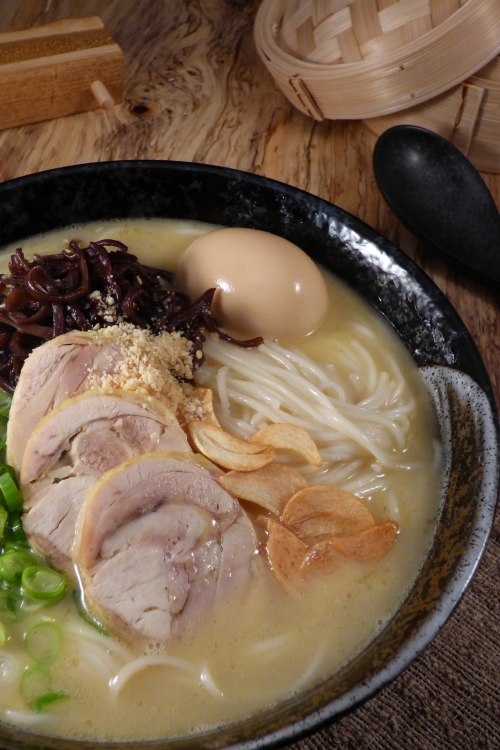As tonkotsu is to Fukuoka in the North, champon is to Nagasaki on the Western coast of Kyūshū- the local variant on ramen, inspired greatly by the tastes of the many Chinese students who flocked to the city in the late 1800s. The soft but flavourful cuisine of China’s Fujian province can be clearly seen through this enticingly colourful seafood dish; succulent squid and prawns combined with tender noodles, stir-fried carrots, beansprouts and cabbage, woodland mushrooms and a silent but knowing nod of agreement to the region’s saying bù tāng bù xíng, or ‘no soup, no meal’. As Nagasaki has a tendency to, the industrious and diverse city took these outside influences and blended them with the Kyūshūan love of pork and fishcakes to create champon- it has remained a favourite ever since and has more recently spread to other parts of the country and overseas courtesy of restaurant chains such as Ringer Hut.
Thanks to the collagen-rich stock and the high proportion of vegetables in the dish people like to think of champon as the healthiest of ramen and- unlike other ramen recipes- is unique in that the noodles and toppings are all cooked together in the broth, providing a slightly thicker soup than you would expect to find. Counter-intuitive as it might seem, Nagasakians eat a steaming bowl of champon to cool down in the oppressively humid Summer months- following the school of thought that sweating helps regulate your body temperature- its just as effective however as a Winter warmer to get you through the coldest, snowy day that Britain can offer with a smile on your face and a satisfied belly.




